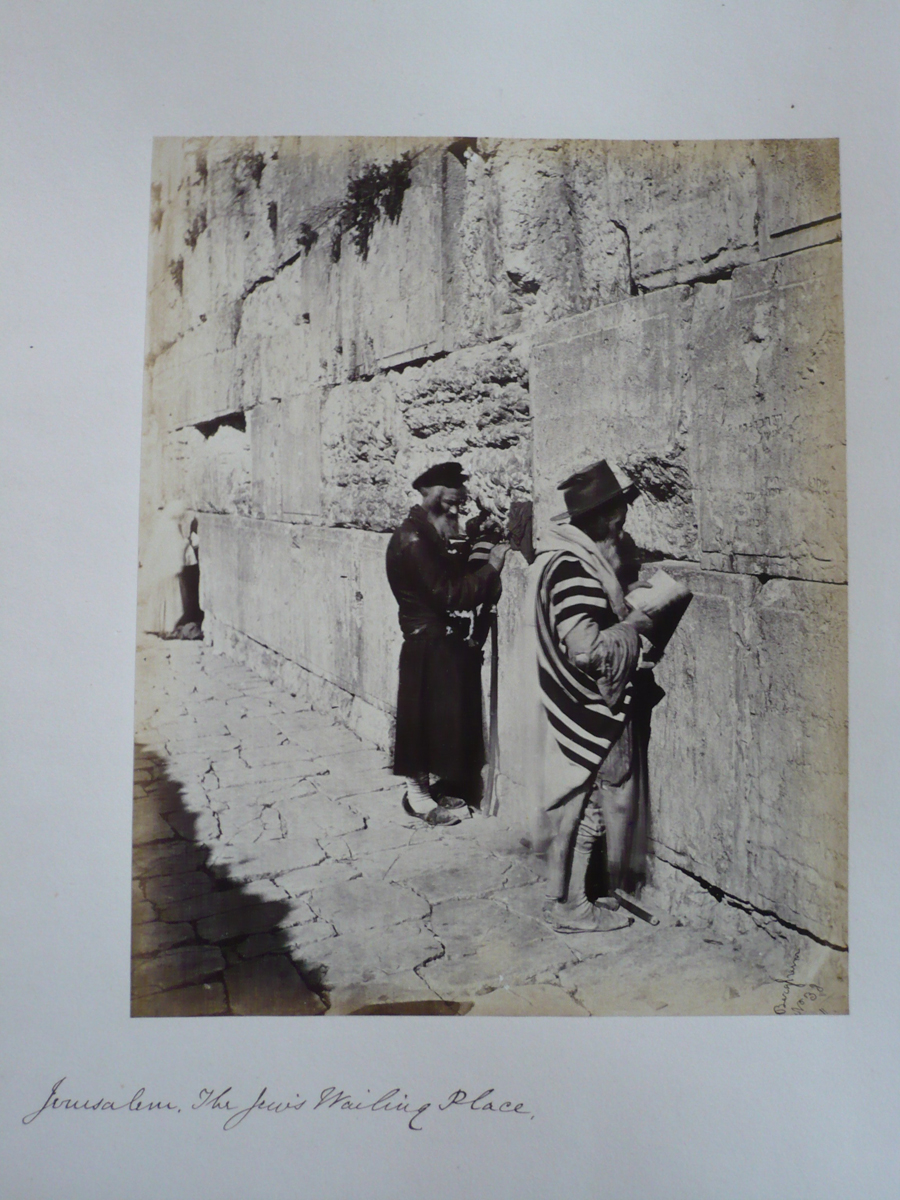In 1840 the Irish physician William Wilde (1815-76), after traveling throughout the Mediterranean, singled out Jewish prayer at the Western Wall as one of the scenes that had most moved him. "Were I asked what was the object of the greatest interest that I had seen, and the scene that made the deepest impression on me, during my sojourn in other lands," wrote Dr. Wilde (father of the future playwright), "I would say that it was a Jew mourning over the stones of Jerusalem."
At around the same time the American biblical scholar and archaeologist Edward Robinson, who had traveled throughout Palestine during the late 1830s, described his visit to the "Jews' Place of Wail" on a Wednesday afternoon. He saw there only "two old men" who "sat there upon the ground, reading together in a book of Hebrew prayers," but added that "on Fridays they assemble here in greater numbers." Robinson, who was a professor at New York's Union Theological Seminary, wrote of the Jews' "touching custom" at "the nearest point in which they can venture to approach their their ancient temple," where "bowed in the dust, they may at least weep undisturbed over the fallen glory of their race; and bedew with tears the soil, which so many thousands of their forefathers once moistened with blood" [E. Robinson, Biblical Researches in Palestine, v. 1 (1841), 349-40].
